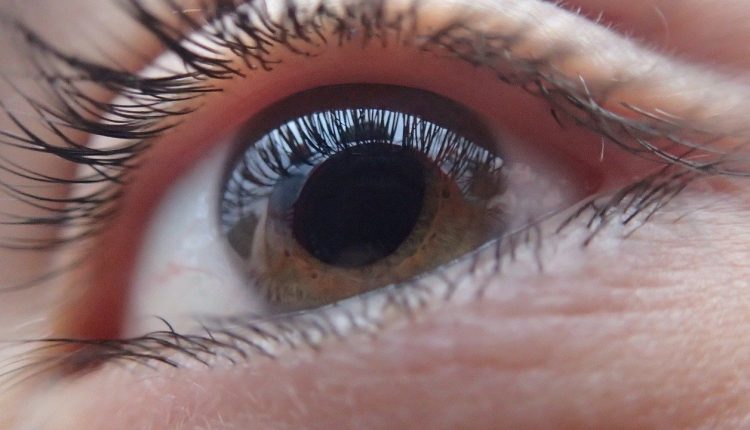
Adie syndrome (Adie's tonic pupil): causes, symptoms, diagnosis, treatment, prognosis
The term ‘Adie syndrome’ (also called ‘Holmes-Adie syndrome’ or ‘Adie’s pupil’ or ‘Adie’s tonic pupil’ or ‘Holmes-Adie pupil’) in medicine refers to a neurological disorder characterised by an abnormality of the pupil that is dynamic in character
The tonically dilated pupil has a slower than normal reaction to stimuli of light changes.
The disease is named after the British neurologists William John Adie (Geelong, 31 October 1886 – 17 March 1935) and Gordon Morgan Holmes, who independently described the same disease in 1931 (22 February 1876 – 29 December 1965).
Adie syndrome: epidemiology
It most frequently affects women at a young age (female to male ratio 2.6:1), around the age of thirty.
It almost always affects only one eye (unilateral Adie syndrome, 80% of cases) but can affect both eyes (bilateral Adie syndrome, 20% of cases).
The average age of onset is 32 years.
Causes of Adie syndrome
Adie syndrome is caused by damage to the postganglionic fibres of the parasympathetic innervation of the eye, usually by a viral or bacterial infection that causes inflammation, and affects the pupil of the eye and the autonomic nervous system.
The cause of the reduced or absent reflexes is unknown.
Adie syndrome presents with three characteristic symptoms
- at least one abnormally dilated pupil (mydriasis) that does not constrict in response to light,
- decreased photomotor reflex;
- sweating abnormalities.
If the person remains in the dark for a long, long time then there is complete constriction as soon as they see sunlight.
Other signs may include:
- hypermetropia due to accommodative paresis,
- photophobia,
- difficulty in reading.
Some individuals with Adie syndrome may also have cardiovascular abnormalities and present with chronic fatigue and increased urinary frequency.
If Adie syndrome is associated with hypohidrosis (pathological decrease in sweating), then Ross syndrome occurs.
Causes
Although the causes are not yet entirely clear, it is believed that the pupillary symptoms of Holmes-Adie syndrome are the result of a viral or bacterial infection that causes inflammation and damage to neurons in the ciliary ganglion, located in the posterior orbit, which provides parasympathetic control of ocular constriction.
Altered pupillary constriction may be an early sign of brainstem herniation.
Patients with Holmes-Adie syndrome may also have problems with autonomic control of the body: this would be caused by damage to the dorsal root ganglia of the spinal cord.
Adie’s pupil is supersensitive to acetylcholine, so a muscarinic agonist (e.g. pilocarpine) whose dose would not be able to cause pupillary constriction in a normal patient causes it in a patient with Adie’s syndrome.
Diagnosis
Clinical examination may reveal a sectoral paresis of the iris sphincter or vermiform iris movements.
The tonic pupil may become smaller (miotic) over time, which is referred to as ‘little old Adie’.
The low-dose pilocarpine test (1/8%) can shrink the tonic pupil due to supersensitivity to cholinergic denervation.
A normal pupil does not shrink with the diluted dose of pilocarpine.
CT scans and MRI scans can be useful in diagnostic tests of hypoactive focal reflexes.
Therapy for Adie syndrome
The usual treatment of standardised Adie syndrome consists of prescribing reading glasses to correct the eye damage.
Pilocarpine drops can be administered both as a treatment and as a diagnostic measure.
Thoracic sympathectomy is the definitive treatment of diaphoresis if the condition is not curable with drug therapy.
Prognosis
Adie syndrome is not life-threatening or disabling: as such, there is no mortality rate related to the condition.
The loss of deep tendon reflexes is permanent and may progress over time.
Read Also:
Emergency Live Even More…Live: Download The New Free App Of Your Newspaper For IOS And Android
First Aid For Dehydration: Knowing How To Respond To A Situation Not Necessarily Related To The Heat
Hydration: Also Essential For The Eyes
What Is Aberrometry? Discovering The Aberrations Of The Eye
Red Eyes: What Can Be The Causes Of Conjunctival Hyperemia?
Ectopia Lentis: When The Lens Of The Eye Shifts
Chalazion: What It Is And How To Treat This Inflammation Of The Eyelid


